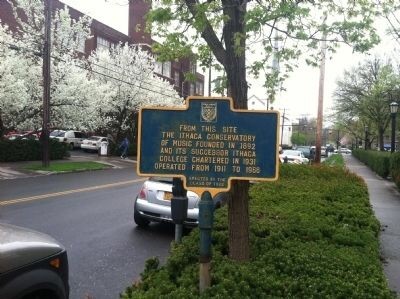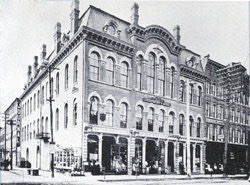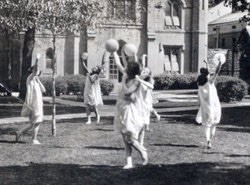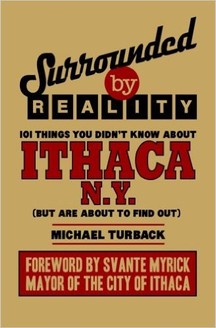Ithaca Conservatory of Music Historic Marker (Ithaca Colllege)
Introduction
Text-to-speech Audio
This marker indicates the original site of the Ithaca Conservatory of Music. Founded in 1892, this institution grew to become Ithaca College.
Images
Historical marker for the Ithaca Conservatory of Music

Wilgus Opera House

Interpretive dance class at Dewitt Park

Surrounded by Reality: 101 Things You Didn't Know about Ithaca, NY, book

Backstory and Context
Text-to-speech Audio
Ithaca Conservatory of Music was founded by William Grant Egbert, an Ithaca native, and violinist who studied in Europe as a young man. Owing to his desire to return home, Egbert considered ways he might start an academy of music. The young man wrote a letter to a friend in Ithaca and asked if he might start raising funds for such a school by selling $50 shares. The fundraising was slow, but this did not deter Egbert, who returned to Ithaca and began the school on September 19, 1892.
The new school began with only four rooms rented out of a house on East Seneca Street. On this same day, the school's faculty gave a free concert in the local Unitarian Church. During the early days of the school, students studied a wide variety of subjects, including solfeggio, composition, guitar, mandolin, and china painting. The Ithaca Conservatory of Music grew slowly in its first years but was soon able to upgrade their facilities and perform more concerts by renting space in the old Wilgus Opera House. Of equal importance, the school began offering courses that connected music to the liberal arts. In 1897, for example, classes in elocution and rhetoric were added. These courses helped prepare graduates for a variety of careers and were also fundamental to the establishment of the school's new program in theater and performing arts.
On November 1, 1910, the directors of the school authorized taking out a mortgage to purchase a permanent home for the school. Judge Douglass Boardman's townhouse, located at the site of this marker, was chosen to be the school's first real property. In the decades that followed, the Ithaca Conservatory of Music became more than a school of music. The Conservatory offered programs in liberal arts, and in 1917, established the Ithaca School of Physical Education. Today, the school offers courses well beyond the arts and humanities, including business, communications, and a variety of programs in the field of science.
The new school began with only four rooms rented out of a house on East Seneca Street. On this same day, the school's faculty gave a free concert in the local Unitarian Church. During the early days of the school, students studied a wide variety of subjects, including solfeggio, composition, guitar, mandolin, and china painting. The Ithaca Conservatory of Music grew slowly in its first years but was soon able to upgrade their facilities and perform more concerts by renting space in the old Wilgus Opera House. Of equal importance, the school began offering courses that connected music to the liberal arts. In 1897, for example, classes in elocution and rhetoric were added. These courses helped prepare graduates for a variety of careers and were also fundamental to the establishment of the school's new program in theater and performing arts.
On November 1, 1910, the directors of the school authorized taking out a mortgage to purchase a permanent home for the school. Judge Douglass Boardman's townhouse, located at the site of this marker, was chosen to be the school's first real property. In the decades that followed, the Ithaca Conservatory of Music became more than a school of music. The Conservatory offered programs in liberal arts, and in 1917, established the Ithaca School of Physical Education. Today, the school offers courses well beyond the arts and humanities, including business, communications, and a variety of programs in the field of science.
Sources
"Ithaca Conservatory of Music." The Historical Marker Database. Accessed March 29, 2016. http://www.hmdb.org/marker.asp?marker=64513
"History of Ithaca College." Ithaca College. Accessed March 29, 2016. http://www.ithaca.edu/about/history.
"History of Ithaca College." Ithaca College. Accessed March 29, 2016. http://www.ithaca.edu/about/history.
